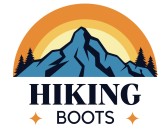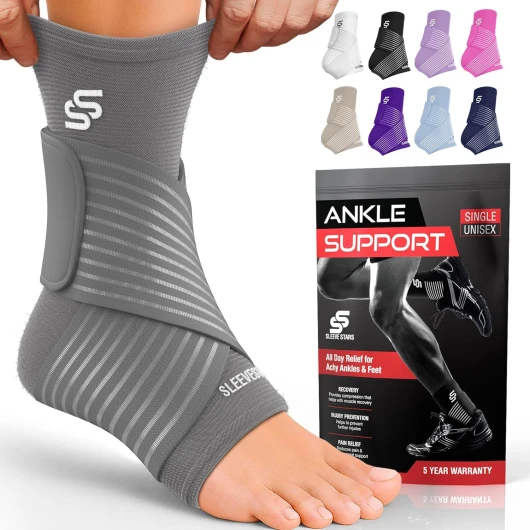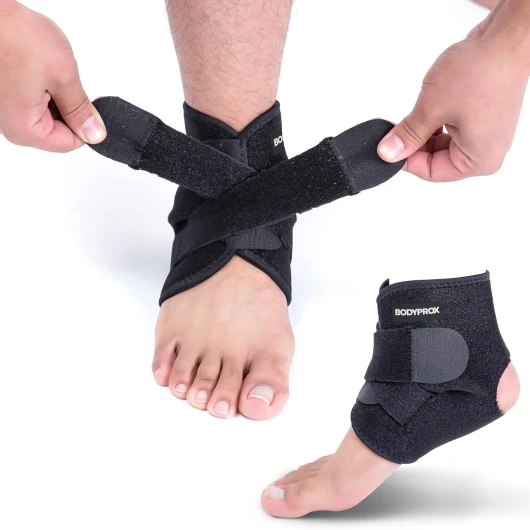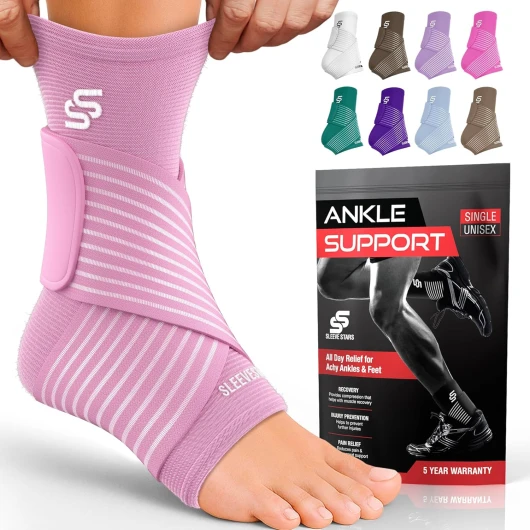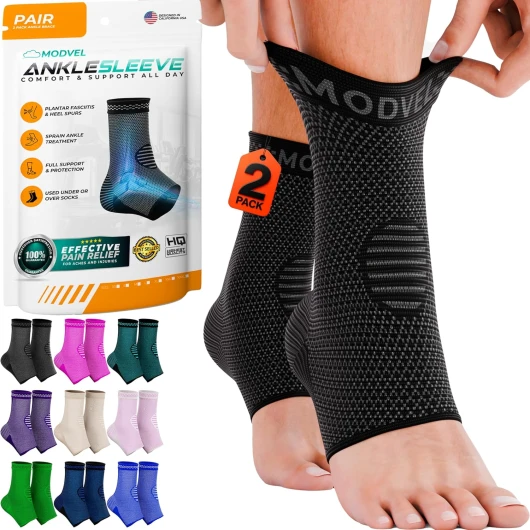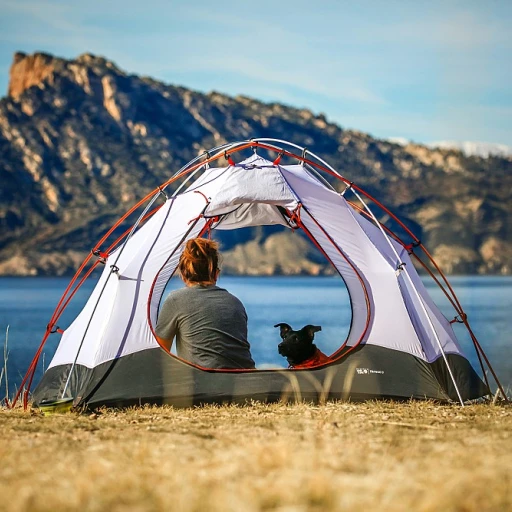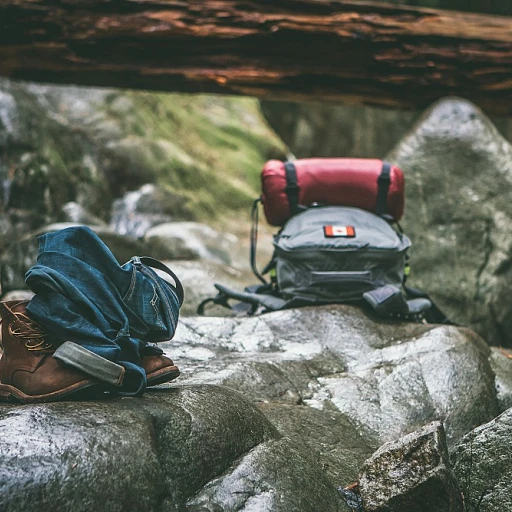
Understanding the Importance of Ankle Support
Why Support is a Game-Changer
When it comes to hiking, ensuring your ankles have adequate support is crucial. A seemingly simple misstep on uneven terrain can lead to something as minor as a sprained ankle or as serious as a long-term injury. For those who venture into the wilderness regularly, acknowledging the importance of ankle support isn't just a recommendation; it's a necessity.
Ankle support in hiking is fundamentally about prevention. It helps avoid common foot injuries by stabilizing the feet and ankles, thereby minimizing the risk of twists and strains. For hikers, understanding the value of proper ankle support can drastically reduce the chances of mishaps during outdoor excursions.
When selecting hiking gear, an ankle brace can be an essential piece of equipment. These products, ranging from compression sleeves to more structured braces, provide different types of support to match your needs. It's crucial to shop for the right balance between mobility and protection, particularly if you anticipate tackling challenging terrains.
For those dealing with existing issues like plantar fasciitis or achilles tendonitis, the right brace can provide significant pain relief and enhance recovery after strenuous hikes. Lightweight models designed for serious hikers ensure that you don't feel weighed down as you traverse trails.
Types of Ankle Braces for Hikers
Exploring Ankle Brace Varieties for Hikers
When it comes to hiking, the right ankle support can make a significant difference in preventing injuries and enhancing comfort. Ankle braces come in various forms, each designed to address specific needs and preferences. Understanding these types can help you make an informed choice for your hiking adventures.
Compression Sleeves
Compression sleeves are a popular choice among hikers seeking lightweight support. These sleeves provide gentle compression around the ankle, promoting blood flow and reducing swelling. They are ideal for those who experience mild pain or want to prevent ankle sprains during long hikes. Compression sleeves are also beneficial for managing conditions like plantar fasciitis and Achilles tendonitis.
Lace-Up Braces
Lace-up braces offer a higher level of support compared to compression sleeves. They are designed to mimic the support of a tightly laced boot, providing stability to the ankle joint. These braces are particularly useful for hikers recovering from ankle injuries or those prone to ankle sprains. The adjustable lacing system allows for a customized fit, ensuring comfort and effectiveness.
Rigid Braces
For those who require maximum support, rigid braces are the go-to option. These braces feature hard plastic or metal components that limit ankle movement, making them suitable for severe injuries or post-surgery recovery. While they offer excellent protection, they may be less comfortable for long-distance hiking due to their bulkiness.
Hybrid Designs
Hybrid ankle braces combine elements of both lace-up and rigid designs, offering a balance between support and flexibility. These products are perfect for hikers who need substantial support without sacrificing mobility. They often include adjustable straps and cushioned interiors for added comfort.
Choosing the right ankle brace involves considering your specific needs, the type of hiking you engage in, and any existing foot or ankle conditions. As you explore these options, remember that the best ankle support is one that aligns with your hiking style and provides the necessary protection to keep you on the trail.
Integrating Ankle Braces with Hiking Boots
Seamless Integration of Ankle Braces with Hiking Footwear
The merging of ankle braces with hiking boots has become a popular approach for both beginners and seasoned hikers looking to boost their stability on the trails. Integrating these two essential products enhances your body's natural support system, providing protection against potential ankle sprains and injuries while offering comfort. To effectively combine ankle support braces with your hiking boots, consider the following factors:- Compatibility: Not every ankle brace is designed to fit comfortably inside all types of hiking boots. Look for lightweight options that complement your specific boot style. A low-profile compression sleeve, for example, fits more snugly without adding unnecessary bulk.
- Proper Sizing: A well-fitted brace is critical for effectiveness. Ensuring the brace closely matches your foot and lower leg dimensions allows for adequate support without restricting movement. Take precise measurements and consult size charts from reputable suppliers.
- Adjustability: Adjustable straps enhance the fit and feel of your brace. They offer the flexibility to find the right level of compression, depending on the intensity of your hike and your personal comfort needs.
- Purposeful Layering: Pair your ankle brace with the right gear, such as moisture-wicking socks or compression socks, to prevent discomfort and blistering.
- Ankle Brace Material: Materials like neoprene are popular for their balance of durability, breathability, and recovery capabilities. They provide robust ankle support and aid in pain relief from issues like plantar fasciitis and Achilles tendonitis.
Benefits of Using Ankle Braces for Experienced Hikers
The Advantages for Seasoned Trailblazers
For those who have logged countless miles on rugged trails, the choice to integrate ankle braces into your hiking gear can be transformative. Ankle braces offer more than just a safety net; they serve as a proactive measure in injury prevention, ensuring that each step taken is stable and secure, especially on uneven terrains.
The brace and hiking combination can significantly aid in reducing wear and tear in the ankle region, providing compression and support to alleviate pain from potential injuries like sprains or even plantar fasciitis. When paired with hiking boots, they work in tandem to deliver outstanding stabilization, reducing strain on your achilles tendon and supporting proper foot alignment.
Seasoned hikers who have experienced the discomfort of a sprained ankle know well the recovery challenges and how disruptive ankle injuries can be to an active lifestyle. Ankle braces and ankle sleeves are designed to assist not just in recovery but in preventing repetitive injuries with their compression and support features.
- Enhanced Stability: Ankle braces help keep your foot and ankle locked in place, minimizing unnecessary movement that could lead to injury.
- Pain Relief & Recovery: By compressing the foot ankle, these products alleviate discomfort from previous injuries.
- Lightweight Design: Modern braces are lightweight and designed for comfort, allowing for long hikes without added bulk.
Incorporating an ankle brace is not only about preventing an ankle sprain or aid in achilles tendonitis healing but also about enhancing overall hiking experience. The added confidence and peace of mind mean hikers can push further and explore beyond previous limits.
Choosing the Right Ankle Brace for Your Hiking Needs
Selecting the Best Support for Your Journey
Finding the right ankle brace for hiking can feel overwhelming, especially with the multitude of products available on the market today. Each offering promises unique benefits, from pain relief to enhanced mobility, but how do you know which brace is perfect for your needs? Firstly, assess the level of support you require. If you're someone who suffers from frequent ankle sprains or has experienced an ankle injury in the past, you might be looking for a brace with substantial support that ensures stability on the trail. For those with mild discomfort, a lighter, compression-style brace may be sufficient, providing just the right amount of compression to alleviate pain without restricting movement. Consider the design of the brace. Open-heel designs allow for easy movement between activities by not constraining the foot, while closed-heels provide additional support beneficial for more rugged trails. It's crucial to match the brace type with the intensity of your hiking activities. Material plays an important role as well. Look for breathable fabrics that allow for airflow, especially if you'll be hiking in warmer climates. Neoprene, for example, offers durability and support, yet might retain more heat, which might not be ideal for every hiker. Compression sleeves are often popular among hikers as they offer a balance of support and lightweight design. They fit snugly around the ankle, improving circulation, aiding the recovery process, and providing support for both the foot and ankle. For those dealing with conditions like plantar fasciitis or Achilles tendonitis, these sleeves can be particularly effective by reducing pain and promoting healing. Don't forget to consider the price and how it fits into your budget. While it can be tempting to go for the cheapest option, consider what you gain in terms of quality and long-term ankle health. Sometimes, investing in a reliable support brace can prevent future injuries, proving cost-effective in the long run. Finally, trying out a few different braces before committing to one may be beneficial. Many sports shops offer a range of ankle braces and knowledgeable staff who can guide you to the best choice based on your unique needs and the trails you'll tackle. With thorough consideration of these factors, you can enhance your hiking experience and keep your ankles supported, so all you need to focus on is enjoying the breathtaking views and adventures ahead.Real-Life Experiences: Hikers Share Their Ankle Brace Stories
Real-Life Insights from the Trail
When it comes to hiking, the experiences of fellow adventurers can offer invaluable insights into the practical benefits of ankle braces. Many hikers have shared their stories about how these products have transformed their outdoor experiences, providing both support and confidence on challenging terrains.
One common theme among experienced hikers is the role of ankle braces in preventing injuries. For those who have suffered from ankle sprains or plantar fasciitis, the use of a compression sleeve or ankle brace has been a game-changer. The added support helps stabilize the foot and ankle, reducing the risk of further injury and allowing for quicker recovery.
Another hiker mentioned how lightweight ankle braces have been essential in tackling longer trails. These products offer the necessary support without adding significant weight, which is crucial for maintaining endurance over extended periods. The combination of hiking boots and ankle braces has provided a perfect balance of comfort and protection.
For those dealing with conditions like Achilles tendonitis, the right ankle support can make all the difference. Hikers have noted that the compression provided by ankle sleeves not only alleviates pain but also enhances mobility, allowing them to enjoy their hikes without the constant worry of aggravating their injuries.
Shopping for the best ankle brace can be overwhelming with the variety of products available. However, many hikers emphasize the importance of choosing a brace that fits well and meets specific needs, whether it's for injury prevention or pain relief. The price of these products can vary, but investing in a quality brace is often seen as a worthwhile expense for the benefits it provides.
In conclusion, the experiences shared by hikers highlight the significant role ankle braces play in enhancing stability and comfort on the trail. Whether you're dealing with a sprained ankle or simply looking for added support, the right brace can be a valuable addition to your hiking gear.
